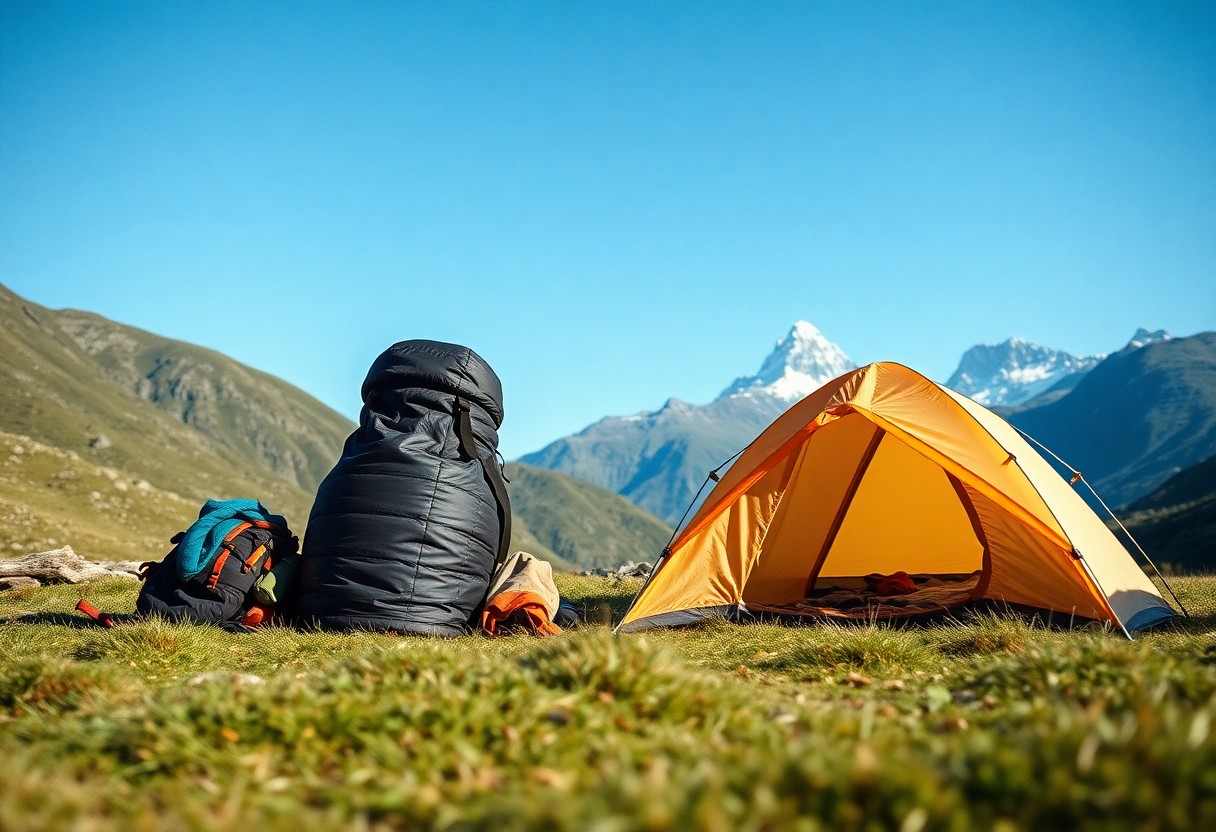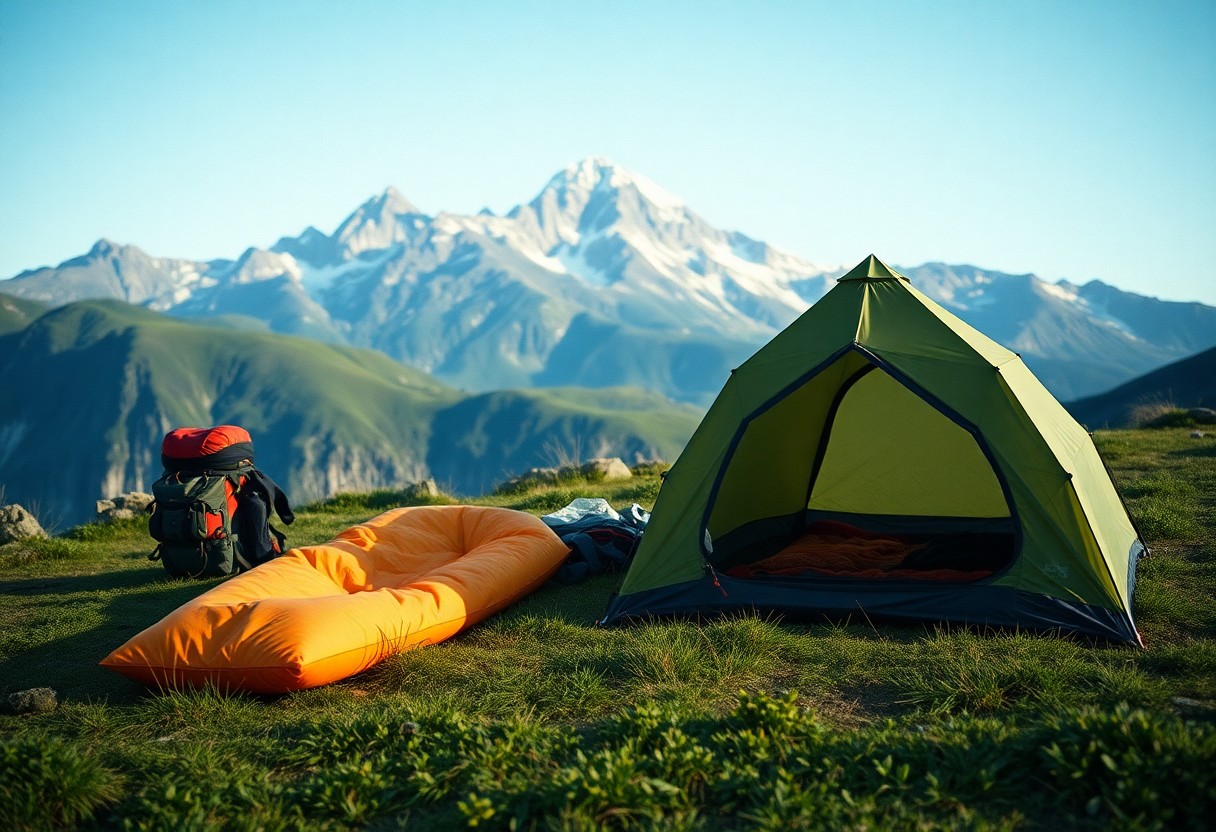You may find yourself torn between choosing a bivvy bag or a tent for your next outdoor adventure. Each option has its unique benefits and limitations that can significantly impact your experience. In this article, I’ll share my personal insights on why the bivvy bag often edges out the tent for my excursions, focusing on aspects such as weight, ease of setup, and weather protection. Understanding these differences can help you make an informed decision suited to your style of camping.
The Bivvy Bag Revolution: Afterthought or Game Changer?
The emergence of bivvy bags has undeniably changed the landscape of outdoor accommodation. While traditionally seen as a mere alternative to tents, they have proven to be a game changer for minimalist adventurers. Their design prioritises lightweight and compact options for those who seek to embrace nature without the burden of heavy gear, proving that simplicity can often lead to a more immersive experience.
Benefits of the Bivvy Bag
Bivvy bags offer numerous advantages, including extreme portability, quick setup, and enhanced ability to blend in with the environment. Their streamlined design allows you to pack light without sacrificing important comfort. Additionally, the waterproof and breathable materials provide protection from the elements while ensuring a good night’s sleep, making them a practical choice for spontaneous adventures.
Situations Where Bivvy Bags Shine
Whether you’re hiking long distances, climbing, or simply spending a night under the stars, bivvy bags excel in numerous circumstances. Their versatility shines in situations where space is limited or conditions are unpredictable. Take, for example, an unplanned overnight stay during a mountain trek; a bivvy can be unpacked in seconds, allowing you to sleep sheltered from sudden rain or chilly winds without wasting time on setup.
Furthermore, bivvy bags are particularly effective for those who enjoy wild camping or stealthy excursions where a tent may draw unwanted attention. Their low profile means they can seamlessly blend into the landscape, keeping you discreet while preserving your connection to nature. On solo expeditions or fast-paced trips, the ability to quickly deploy your bivvy means you can focus more on your surroundings and experience the tranquillity of the wild, rather than the intricacies of setting up a larger tent.
The Tent Experience: Shelter or Comfort?
Choosing a tent often comes down to balancing shelter and comfort. While tents provide an excellent barrier against adverse weather, their size and design can greatly impact your overall camping experience. A space that feels cramped may detract from the enjoyment of the great outdoors, whereas a well-structured tent can create a cozy sanctuary at the end of a long day’s hike. Ultimately, the essence of the tent experience lies in how effectively it meets your specific needs, allowing you to relax and feel secure in nature.
Advantages of Traditional Tents
Traditional tents offer unparalleled advantages, such as spaciousness and versatility. Many models feature multiple compartments and high ceilings, providing ample room for movement and storage. Their semi-permanent structure makes them ideal for longer stays, allowing you to settle in comfortably. Additionally, tents often have various options for ventilation and insulation, keeping you protected from the elements while ensuring a pleasant sleeping environment.
Ideal Conditions for Tent Use
Tents are best suited for trips where you have a reliable spot that shields you from extreme weather conditions. Ideal scenarios include camping in temperate climates during late spring to early autumn. In these conditions, you can enjoy the benefits of a traditional tent without battling harsh winds, freezing temperatures, or heavy rain. The availability of flat ground is equally important, allowing for a secure and pleasant camping experience free from unnecessary discomforts.
Setting up your tent in these ideal conditions transforms the experience into a far more enjoyable one. You’ll find that beautiful evenings spent under a canopy of stars can be remarkably peaceful when you’ve got a solid structure overhead. The right temperatures reduce the risk of overheating or chilling through the night, while a dry environment allows for easier setup and packing. Maintaining this balance enhances your outdoor adventures, ensuring that the focus remains on the enjoyment of nature rather than on battling the elements.

Weight vs. Space: The Backpacker’s Dilemma
Balancing weight and space is a common challenge for backpackers. If you prioritise lighter gear, you might lean towards a bivvy bag, which can weigh as little as 500 grams; however, this typically sacrifices internal space. Conversely, tents offer more room and storage but often come with heavier weight. You’ll find that every additional item in your pack seems to multiply in burden, making your choice not just about comfort, but also about practicality on the trails.
Portability of Bivvy Bags
Bivvy bags excel in portability, fitting snugly into your backpack without taking up much space. Their lightweight design – some as low as 300 grams – means you can easily attach them to the outside of your pack or slip them into the side pocket. This compactness makes them a favourite for minimalist backpackers and those tackling challenging terrains. Moreover, quick setup allows you to maximise your time on the move, rather than wasting precious moments pitching a tent.
Storage and Living Space in Tents
Tents provide significantly more living space and storage options compared to bivvy bags. With features such as vestibules and multiple compartments, you can keep your gear organised and sheltered from the elements. This extra room allows you to set up an area for cooking or comfortably change clothes, making your camping experience much more enjoyable, particularly during prolonged trips where comfort truly matters.
In tents, you’ll typically enjoy standing room, which is a considerable benefit when trying to organise your belongings or simply stretch after a long day of hiking. For instance, a two-person tent might afford you around 80 square feet of space, allowing ample room for two sleeping bags alongside cooking equipment. The increased interior volume offers not just shelter from the rain, but also a sense of home away from home, letting you weather the storms in both comfort and style.
Weathering the Elements: Durability and Protection
Choosing between a bivvy bag and a tent often hinges on their ability to endure the elements. Bivvy bags are typically made from resilient, waterproof materials that offer excellent protection against the rain, while also allowing breathability to prevent condensation build-up. Tents, on the other hand, range widely in their durability; from lightweight, minimalist designs to robust models designed for extreme conditions, they can offer extensive shelter against wind and snowfall. Understanding these factors helps you decide what will best suit your adventures.
Bivvy Bags in Harsh Conditions
Bivvy bags shine in challenging environments, often crafted from tough fabrics like nylon or Gore-Tex that resist abrasions and tears. Their streamlined design minimises surface area against the wind, ensuring you stay warm and dry even during intense storms. The lightweight nature of bivvy bags makes them ideal for high-altitude treks or whenever you’re pushing your limits, but be wary; their snug fit might restrict movement and ultimately, comfort.
Tent Resilience Against Nature’s Fury
Tents vary significantly in resilience, with some designed specifically to withstand high winds and heavy precipitation. Look for tents with features such as strong, geodesic structures for stability and rainflys that extend well over the doors to prevent leaks. High-quality materials like ripstop nylon and sturdy poles are important for ensuring your shelter can brave the elements without succumbing to nature’s fury.
When identifying a tent, consider its design features such as high waterproof ratings (measured in mm), which determine how well it can handle rain. A tent with a rainfly that extends low can shield against wind-driven rain, while its vestibules provide extra space for gear, keeping you drier. Additionally, tents often come with a footprint or groundsheet, which protects the base from sharp objects and moisture, enhancing durability. Choosing a tent thoughtfully will ensure you remain protected and comfortable, even in the harshest conditions nature can throw at you.
Personal Preference and Usage Scenarios
Your choice between a bivvy bag and a tent often boils down to personal preference and the specific scenarios you encounter. Factors such as the environment, duration of your stay, and even your desired level of comfort play a significant role. Bivvy bags cater well to minimalist adventures, while tents typically provide more space and amenities for longer stays, making them a better fit for varied needs.
My Journey: When I Choose a Bivvy Bag
You might find yourself gravitating towards a bivvy bag during spontaneous trips or when weight is a concern. For instance, on a recent overnight hike, the ease of throwing my bivvy bag into my rucksack meant I was ready to set up camp within moments, allowing me to capitalise on the fading daylight.
Times I Opt for a Tent
Opting for a tent generally happens during longer excursions or multi-day camping trips, especially when comfort and group size come into play. For example, a camping trip with friends becomes much more enjoyable with a spacious tent, allowing everyone to store gear and move around comfortably. Let’s not forget the convenience of added features like a vestibule for storing wet gear, which a bivvy simply can’t match.
A tent serves as a reliable shelter for those weekends spent at campgrounds or festival grounds, where amenities like communal cooking areas and bathroom facilities are present. They often afford a better barrier against creepy crawlies and provide much-needed space for a romantic getaway or family bonding trips. You can share meals, play games, and congregate in a way a bivvy simply does not permit, enhancing the overall experience of your outdoor adventure.
Conclusion
Taking this into account, when choosing between a bivvy bag or a tent, it ultimately depends on your personal preferences and the conditions you expect to face. A bivvy bag offers a lightweight, compact option ideal for minimalist adventures, whereas a tent provides greater space and protection for longer stays or harsh weather. You should consider factors such as your comfort level, the type of terrain, and the duration of your trips to determine which option best suits your needs. Whichever you choose, ensure it aligns with your outdoor aspirations.
